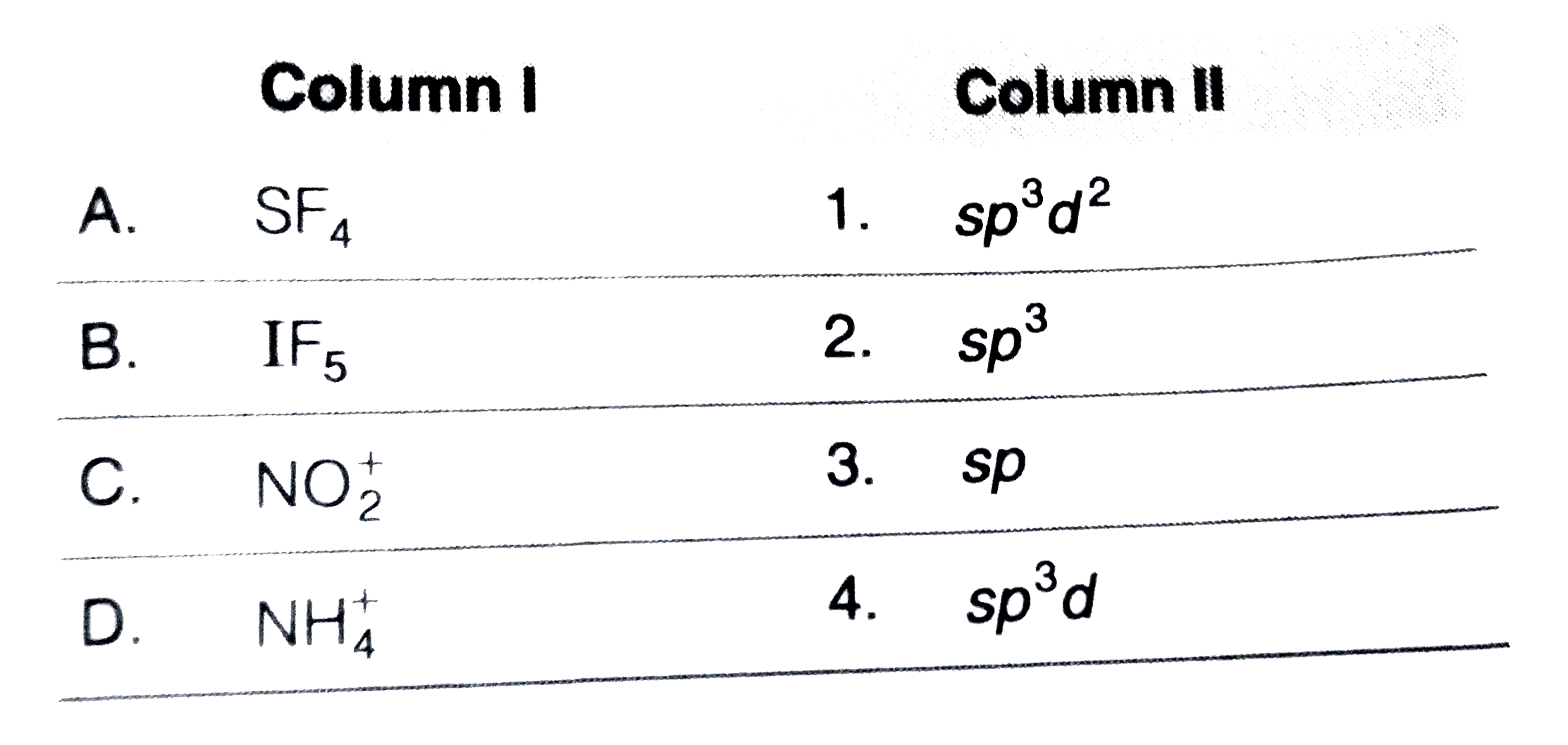Complete Solutions to EXERCISE 2 (Miscellaneous Problems) of chapter NATURE OF CHEMICAL BOND of Class 12 book with complete answers and questions
| Class 12 | CHEMISTRY |
| Chapter | NATURE OF CHEMICAL BOND |
| MHTCET PREP GUIDE | EXERCISE 2 (Miscellaneous Problems) |
| Number Of Questions | 20 |
| Academic Year | 2023-24 |
The percentage ionic characterin `Cs-Cl` bond present in CsCl molecule will, be, if the electronegativities for Cs and Cl are `0.8 and 3.0`, respectively
View SolutionIf molecule `MX_3` has zero dipole moment, the sigma bonding orbitals used by M (atomic number `lt21`) are
View SolutionWhich of the following pairs has zero dipole moment ?
View SolutionGiven : Dipole moment of `HCl=1.03` D
Bond length of `HI=0.38D`
Bond length `=161`pm
The ratio of partial positive charge on H-aotm in HCl to that in HI will be
View SolutionThe correct order of increasing covalent character of the following is
View SolutionBond energy `H-H,F-F and H-F` bonds are 104, 38 and 135 Kcal `"mol"^(-1)`, respectively. The resonance energy in the `H-F` molecule will be
View SolutionWhich of the following compounds has the samallest bond angle in its molecule ?
View SolutionThe bond order of `H_(2)^(-)` ion is `(1)/(2)`. If it has 2 bonding electrons, how many antibonding electrons it will have ?
View SolutionArrange the following molecules in the increasing order of bond angle.
`underset(I)(H_(2)O) underset(II)(H_(2)S)underset(III)(H_(2)Se) underset(IV)(H_(2)Te)`
View SolutionThe compound `MX_(4)` is tetrahedral. The number of `angleXMX` angles formed in the compound is
View SolutionMatch the following and chose the correct option.

View SolutionIn `XeF_(2),XeF_(4)` and `XeF_(6)(g)` the number of lone pairs on Xe respectively are :
View SolutionMolecular shapes of `SF_(4). And CF_(4) and XeF_(4)` are:
View SolutionThe d-orbitals involved in `sp^(3)d` hybridisation is:
View SolutionIn accordance to molecular theory,
View SolutionThe bond dissociation energy of `B-F` in `BF_(3)` is `646 kJ mol^(-1)` whereas that of `C-F` in `CF_(4)` is `515 kJ mol^(-1)`. The correct reason for higher `B-F` bond dissociation energy as compared to that of `C-F` in `CF_(4)` is
View SolutionWhich of the following statements (s) is/are true ?
View SolutionIn which of the following ionixation processes , the bond order has increased and the magnetic behaviour has changed ?
View SolutionConsider the following compounds,
I, 1,2-hydroxybenzene
II 1,3-dihydroxybenzene
III 1,4-dihydroxybenzene
IV. Hydroxybenzene
View SolutionOrtho -nitrophenol is less soluble in water than `p`-and `m-`nitrophenols because
View Solution
EXERCISE 2 (Miscellaneous Problems) questions and complete solutions for chapter NATURE OF CHEMICAL BOND of MHTCET PREVIOUS YEAR PAPERS AND PRACTICE PAPERS of Class 12